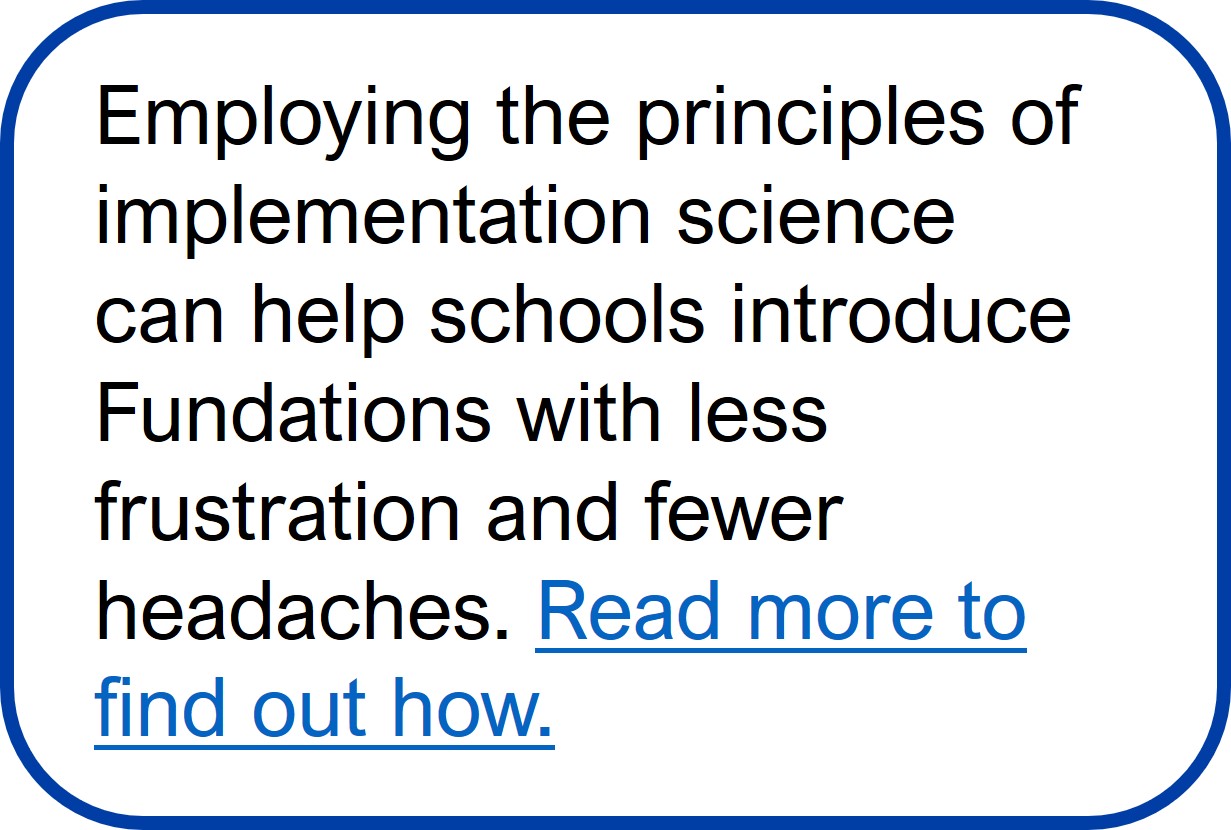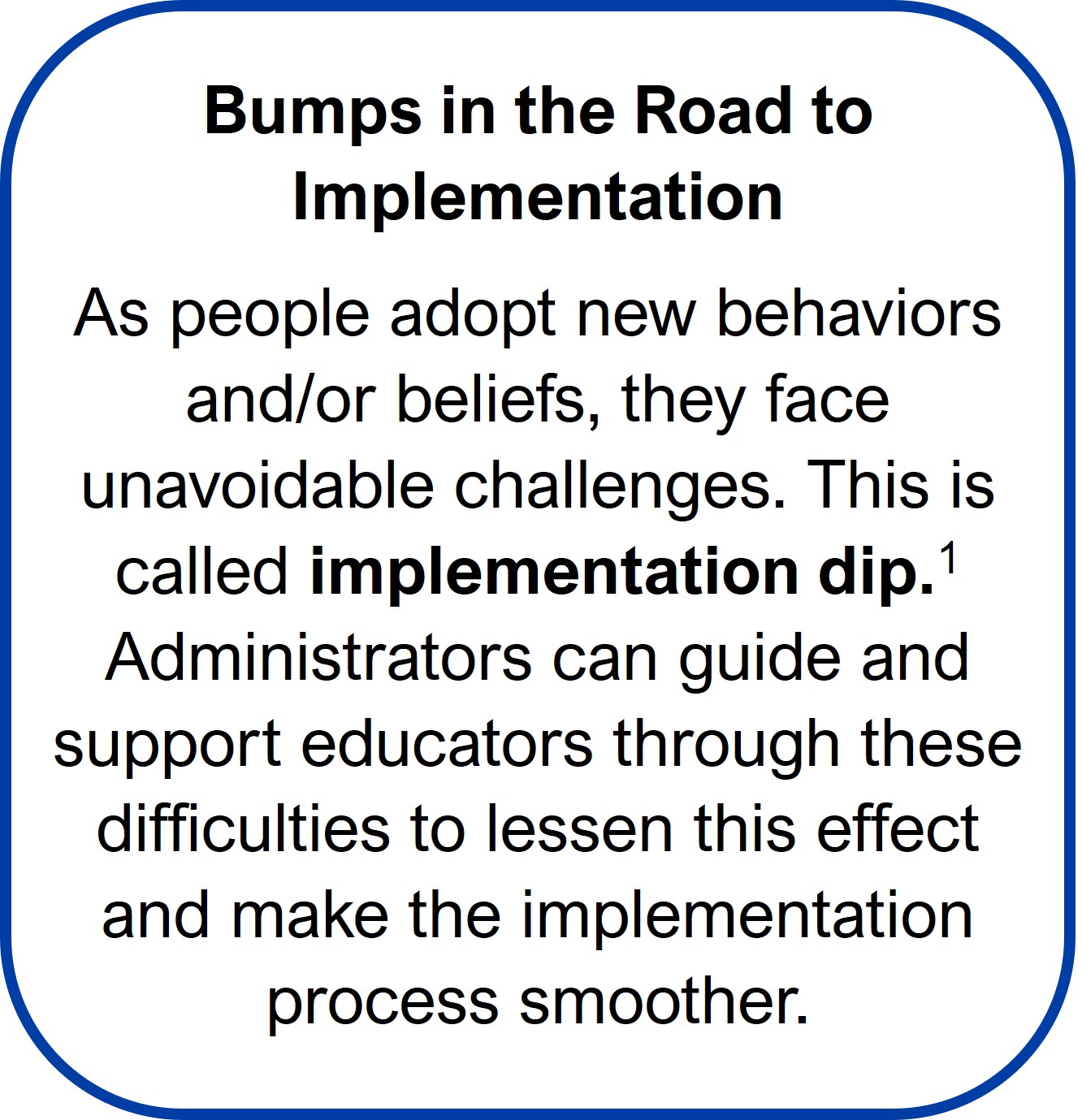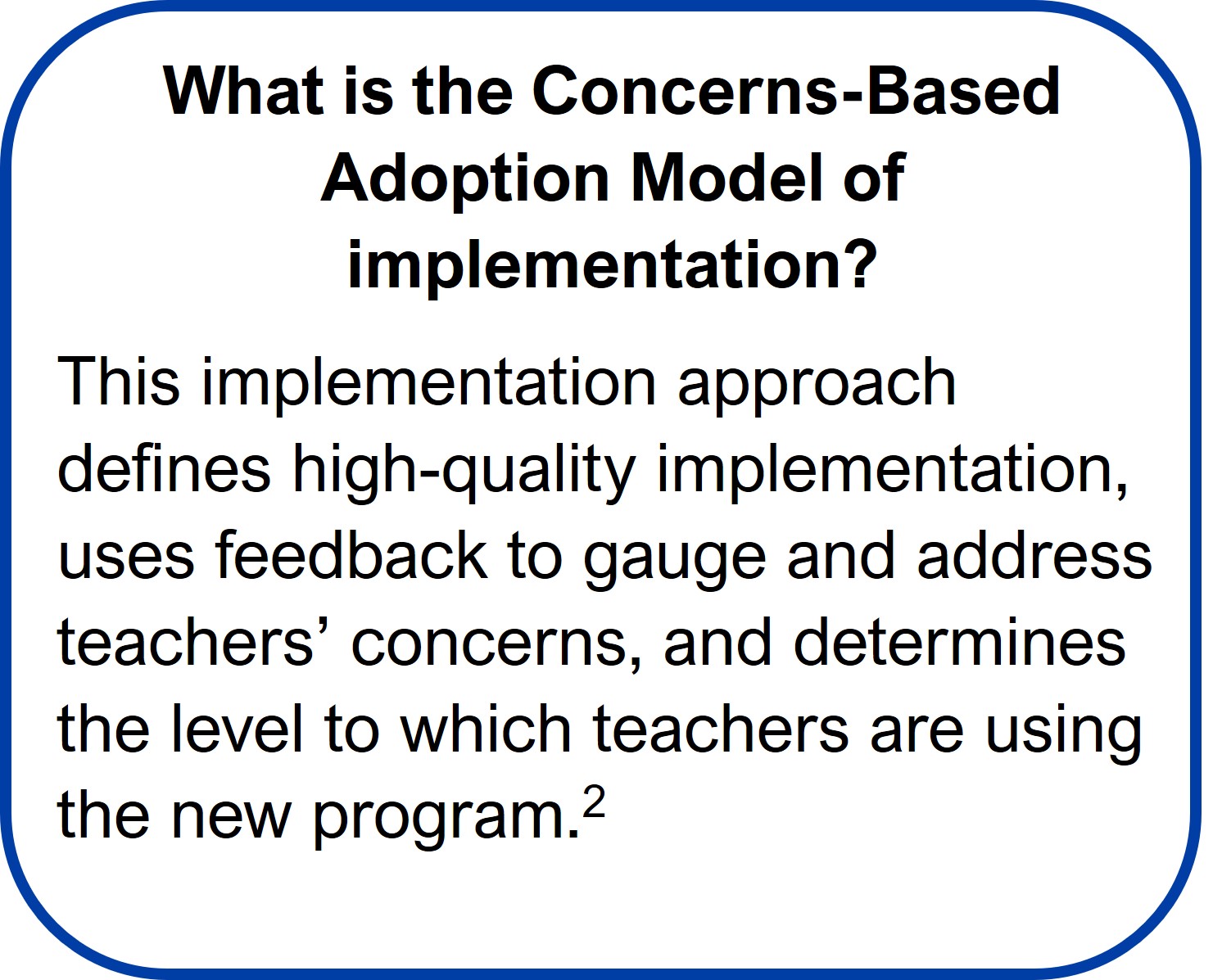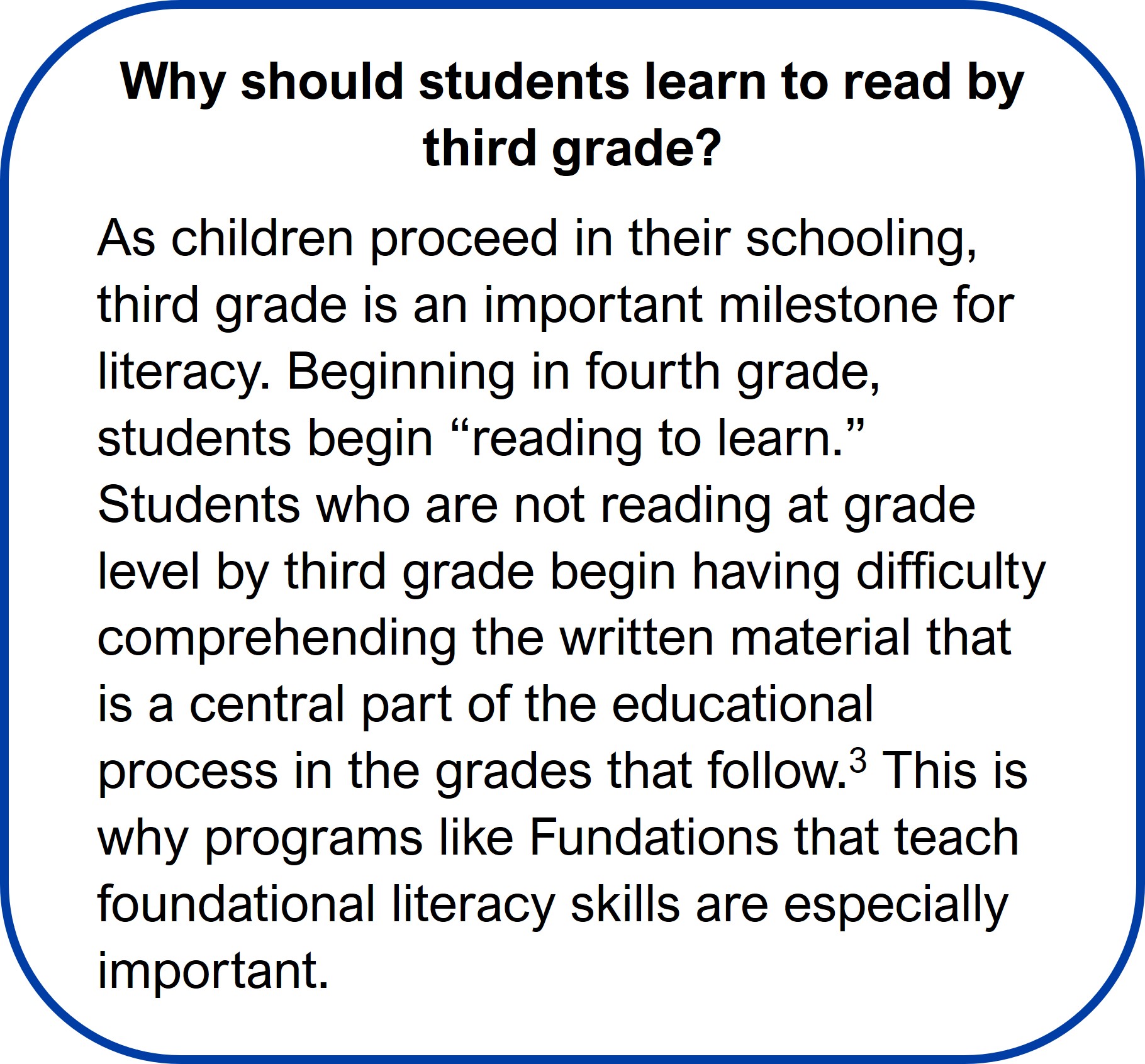

Successful implementation of a reading program is more than an art—it’s a science. It requires an organized approach based in implementation science that includes planning, training for teachers and administrators, and internal and external support for those groups.
Terry is the K–12 director of humanities in his school district in New York state. As often happens in many schools, he and his district leadership team had noticed literacy learning gaps for students in kindergarten through third grade.
In the fall of 2014, they formed a committee and explored the option of using Fundations® to close literacy learning gaps by implementing it in a few classrooms. The teachers’ feedback was overwhelmingly positive, so the district began implementation across all elementary schools, beginning with kindergarten and first grade in the winter of 2015.
Terry said, “The only teachers who were upset with our process were the second-grade teachers because they would have to wait a year. That’s a testament to how well our implementation process worked.”

Terry discovered his passion for implementation science when he helped his district with that Fundations rollout nearly a decade ago.
“I’ve been in different leadership positions for many years and was frustrated because we would start initiatives, and we wouldn’t go anywhere with them,” Terry said. “They would all fall away.”
That didn’t happen with this implementation. In fact, being part of the process inspired Terry to focus on implementation science as he worked toward his Ed.D.

During the first few years of Fundations implementation, the district saw plenty of promising student growth. To achieve that, Terry and district and school administrators really focused on building capacity among teachers to sustain the program.
Focusing on teachers’ capacity included providing them with the appropriate training and support from Wilson® Literacy Specialists as well as listening to and addressing their concerns throughout the implementation process. “We really worked with Wilson staff to implement this. We knew that if we were going to do this, we were going to do it right.”
Terry’s district-level team also collaborated with the administrators of each school to prevent any potential issues and prepare teachers to switch to using Fundations. Terry said, “I think most implementation problems occur when leaders don’t feel comfortable in supporting teachers through the change. It allows frustration, that implementation dip—which is natural—to chip away at the ultimate goal.”
He continued, “We have to normalize the fact that change can be difficult because it is going to get sticky. We have to be okay with that.”
Terry and school administrators used the Concerns-Based Adoption Model to mitigate challenges. This model provided the school administrators with direct feedback from teachers about the Fundations implementation. The administrators then helped teachers resolve any issues until they felt successful.

“It allowed us to categorize teacher feedback and then right-size our [solutions],” Terry said.
Addressing teachers’ concerns as they arose kept communication lines open and helped teachers master using Fundations in their classrooms.
“What a difference that made because we listened to our teachers. It wasn’t magic, but we were able to sift through their apprehensions using the Concerns-Based Adoption Model,” Terry said.
A common early question from teachers centered on how to manage all the materials. School administrators found that hosting a special day during summer break when teachers could pick up their Fundations classroom materials eased the introduction to the program. Teachers were paid to spend the day organizing their materials and lessons to prepare for the new school year.
Even after initial training took place, Wilson Literacy Specialists visited the schools and modeled Fundations lessons while teachers watched via closed-circuit television in groups. (This was done before the era of real-time video streaming.) Eventually, but still earlier on in the implementation, each grade level throughout the district developed two designated Fundations Facilitators to answer teachers’ program-related questions. Facilitators are programmatic teacher leaders who are trained to support their fellow Fundations teachers, promoting student achievement through fidelity of implementation.
“We continued to utilize the assistance of Literacy Specialists and Literacy Advisors throughout our implementation, even after our [Facilitators] were trained,” Terry said. “We knew it was important to have an outside perspective and expertise to bring our staff and leaders along. This gave us the time we needed to build the internal capacity to sustain the program.”

Now that implementation is complete, the district has one designated Fundations Facilitator to train teachers new to the district and those preparing to teach Fundations at a different grade level.
Students continue to receive the benefit of instruction with fidelity as teachers continue to strive forward through COVID-19 pandemic-related learning loss and teacher turnover.
“Our ultimate goal is to have everyone reading on grade level by third grade because we know how important that is.”
Learn more about how Wilson Language Training® (WLT) can support your school or district to implement Fundations and other WLT programs. Contact us to increase student success!
1 Learning Forward. (2012, April). Up close. The Learning Professional: The Learning Forward Journal, 33(2). Retrieved from https://learningforward.org/journal/implementation-2/up-close-8/
2 American Institutes for Research. (2015, December 8). CBAM: The concerns-based adoption model. Author. https://www.air.org/resource/cbam-concerns-based-adoption-model
3 Lesnick, J., Goerge, R. M., Smithgall, C., & Gwynne, J. (2010). Reading on grade level in third grade: How is it related to high school performance and college enrollment? A longitudinal analysis of third-grade students in Chicago in 1996-97 and their educational outcomes. [A Report to the Annie E. Casey Foundation]. Chapin Hall at the University of Chicago. https://www.chapinhall.org/wp-content/uploads/Reading_on_Grade_Level_111710.pdf